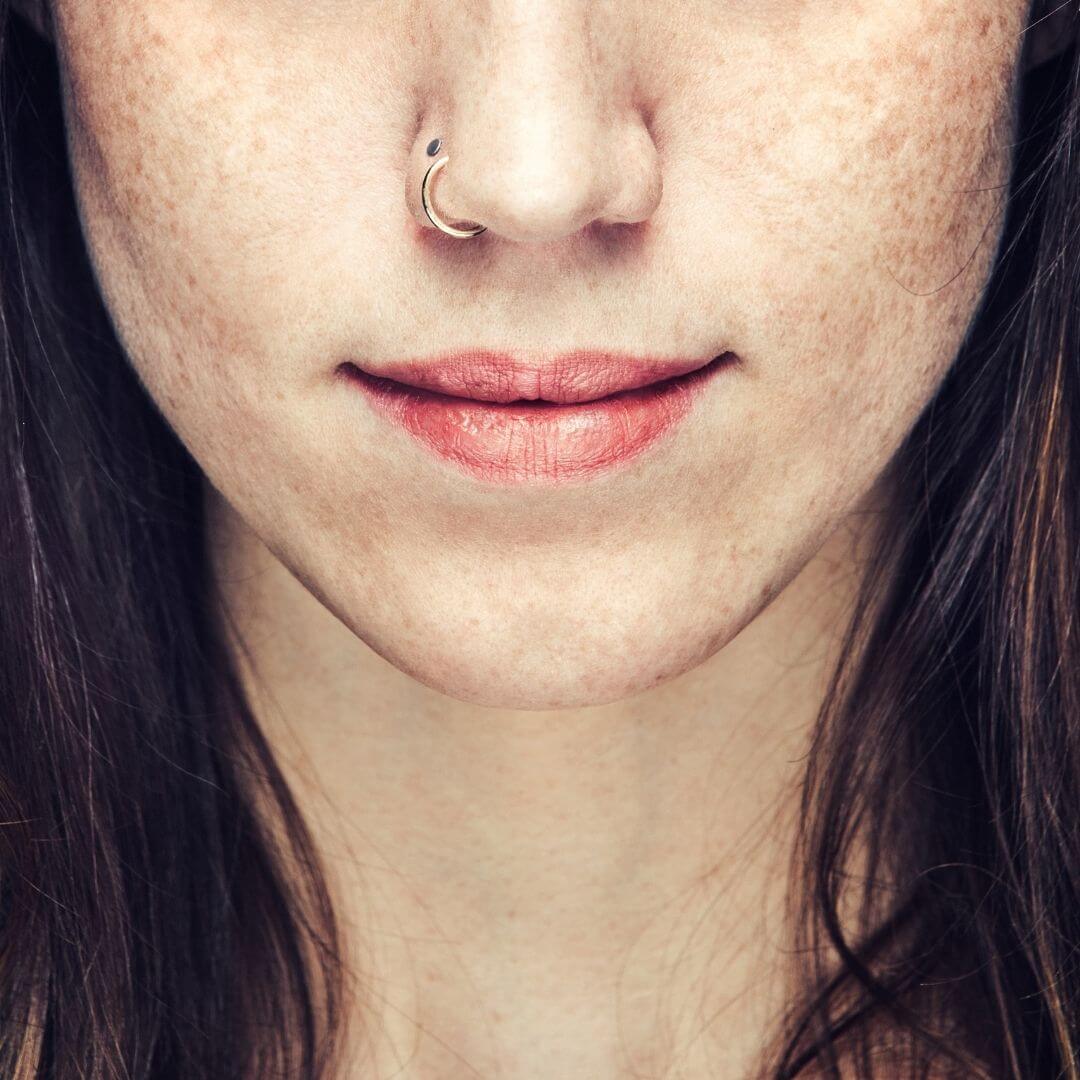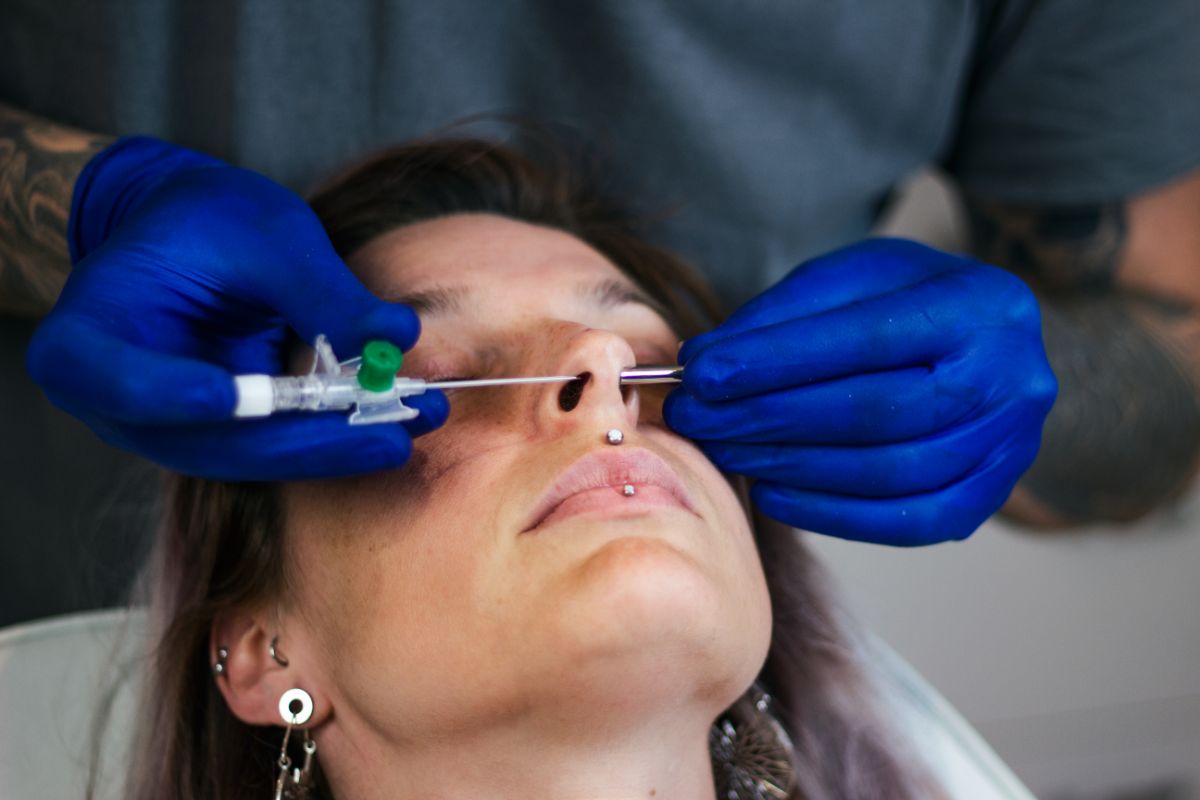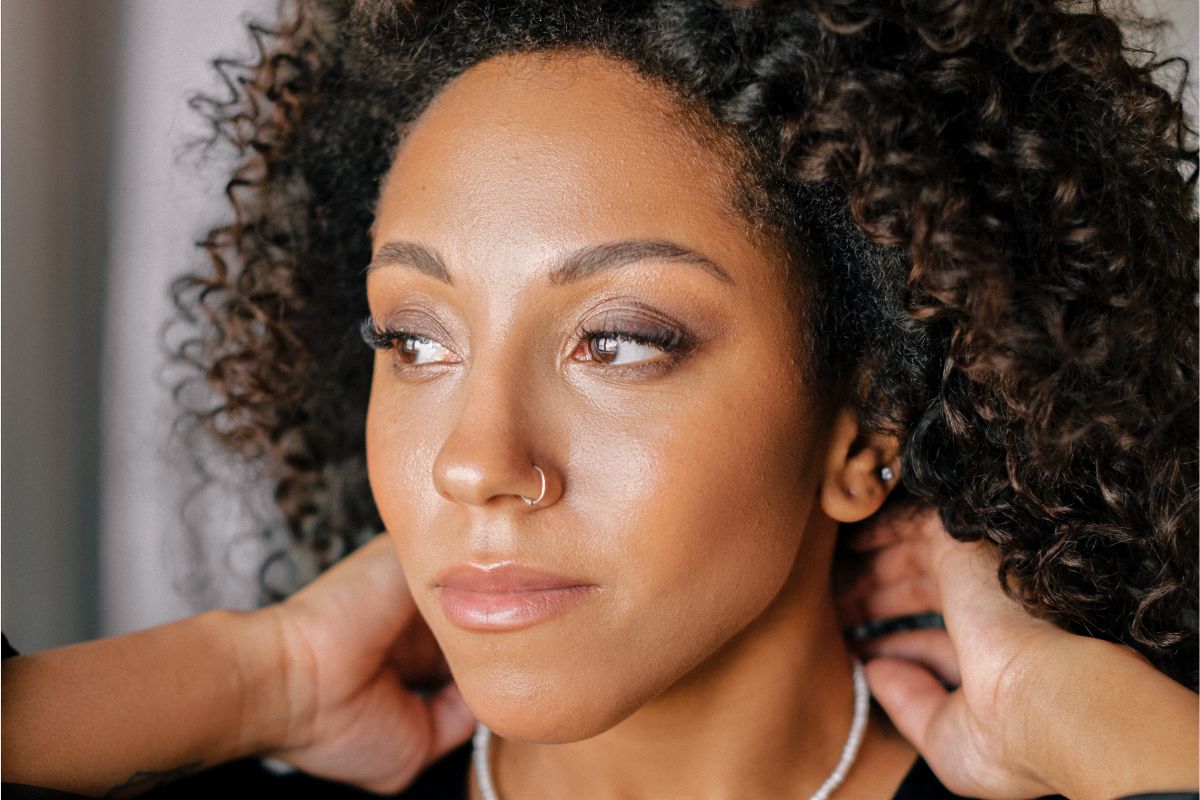Shopping for nose rings is not as easy as shopping for a bag. Just because you like it doesn't mean it's suitable for your piercing. There are three things that you need to consider when shopping for a nose ring.
One, you should know what gauge to use; this refers to the thickness of your jewelry. Two, you must know the inner diameter of the jewelry to ensure that it fits you well, and mind you, the diameter has nothing to do with your nose size.
Last but not least, you should check with your seller if they. Have special measuring considerations. So yes, shopping for nose rings can be a bit complicated but don't worry, we'll give you several tips that will make shopping a breeze.

How to Find The Right Nose Ring Size
How Are The Gauges Measured?
The gauge refers to how thick the material of your nose ring is. One thing to keep in mind is that the smaller the number, the thicker the jewelry is. For instance, if you get a 22 gauge nose hoop that's approximately 0.64 mm while an 18 gauge is around 1.0 mm.
Knowing the gauge of the jewelry is very important to keep your piercing safe. If the jewelry is too thick for your piercing, don't force it in. What if you don't know or you forgot your size? Since you can't use a ruler to determine the gauge, here's what you can do.
#1 You can ask your piercer for assistance. This is probably the most effective way to make sure you're using the correct gauge.
#2 If you've tried buying nose rings before,e it's likely that the stores where you bought them from have gauge cards. Use a gauge card to compare the thickness of your jewelry
#3 Use a Micrometer or Caliper
You can use a micrometer or a caliper to measure the gauge. A micrometer is quite expensive, but it does give precise measurements. A cheaper option is a caliper. It also provides accurate measurements for jewelry. Aside from the gauge, you can also use a caliper to measure the inner diameter of your last hoop.
#4 Gauge Measurement Wheels
Gauge measurement steels are usually made out of steel. These wheels have spiky edges and may potentially create scratches to your jewelry. These wheels are designed to measure straight wires, but you can also use them to estimate the gauge of a stud.
#5 Drill Gauge
You can use a drill gauge to estimate the gauge of an L-bend nose stud or a labret. Unfortunately, this tool won't work if you want to know the estimated thickness of a nose hoop. This can also scratch your jewelry. To keep your jewelry safe, we highly recommend you use a caliper.
What's The Usual Gauge for Nose Piercings?
The most common gauge used in nose piercings is 18, but some people prefer to scale down to a 20 gauge once their piercing has healed completely. Seldom, some choose to downsize to a 22 gauge.
However, professional piercers discourage you from using jewelry that's thinner than 22 gauge since these jewelry pieces can deform easily; technically, you're only wasting your money.
How Do I Know the Diameter of My Nose Ring?
Go to your jewelry stash and check for nose hoops. If you can't remember the diameter when you bought them, all you need is to measure the inner diameter with a caliper. But, if you're not sure about the inner diameter, you can draw a horizontal straight line through the inside of the hoop and then measure it; that's how you'll get the inner diameter.
Can I Make My Nose Hoop Tighter?
If you don't have a nose hoop in your treasure trove, don't lose hope. It's easy to measure your nose piercing at home. Just remember that the inner diameter is not related to the size of your nose.
The measurement is more on how high your piercing is placed from the tip of your nostril. You can use paper and a ruler to know what diameter will make your jewelry fit comfortably. There's a technique that we do to get the measurement.
Instead of holding the ruler up against your nose, we suggest you cut a paper, line it up at the top with your piercing, and then put a mark on the edge of your nostril at the bottommost part of your paper. Once you have the markings, you can now use a ruler to measure. Another option is doing it the other way around.
Place the edge of the paper at the bottom of your nostril and then hold it up and create a marking where your piercing hole is located. This measurement will give you the smallest inner diameter. If you find the jewelry too snug, you can choose to loosen it up a bit by adding 1 millimeter to your measurement.
Should the Nose Ring Fit Too Snugly?
The answer is no. If your nose ring makes you feel uncomfortable, and you can already feel the pressure once you insert the hoop, then it's probably too tight. Another way to know if it's too tight is when you can hardly close the hoop. It means the inner diameter is way too small. In such a case, you'll need to find a piece of different jewelry.
What If I Want to Make My Hoop Smaller?
Is it possible to make my hoop smaller? Can I make it smaller? Well, you can, but we highly discourage you from doing so. Assuming you bought the wrong size online. If the hoop is too loose, you have no choice but to measure the piercing and purchase a new one.
When you try to adjust or resize a hoop at home using common household items, you might deform your jewelry, which can be unsafe, especially if it has spikey edges.
What Can I Do If My Nose Piercing is Way Too High For A Hoop?
Many people complain that their nose piercing is placed way too high. In such a case, you just need to find a different jewelry shape. You can get an oval nose ring or get an open hoop.
What Jewelry Styles Would You Prefer?
There are many different nose piercing jewelry to choose from. Let's explore some of the widely used nose piercings today.
Nose Studs
Nose studs come in a wide range of styles. There is no rule as to what jewelry style to get. It all boils down to your preference. The problem with most people is they choose the first one they see and end up regretting their decision.
We recommend you check all types of styles before you shell out cash for a jewelry piece. The last thing you want is spending money on something you're not going to use because you found a better option. Examples of nose stud styles are the twist, bone, L Post, and the Pin.
Twist – this unique type of nose stud is shaped to look like a screw thread. To insert it into the hole, you just need to twist it.
Bone – a bone prong is a straight prong with a tiny nub at its very end just a tad bigger than your piercing gauge. To put it on, you just need to push the bone prong into the piercing. However, professional piercers suggest you should only insert it once the piercing is completely healed.
L-Shaped Prong – as the name implies, this nose stud is shaped like the letter L. To insert this jewelry, you just need to push it gently through the piercing following a ninety-degree angle. And then, to secure the jewelry, you should slowly twist it.
Flat Back Stud – of all the jewelry styles listed, the flat back stud is the only jewelry that you can use in other piercings. This piercing is popularly used in lip and cartilage piercings. It has a prong and a threaded flat back. To put it in, you just need to push it through the piercing and then carefully screw the back part into the prong to secure it. Although it's one of the most secure types of jewelry, it can be challenging to insert if you have small nostrils. But if the challenge doesn't bother you, go ahead and order flat back studs.
How Do You Care for Your New Piercing?
The best part about getting a nose piercing is that the healing process is pretty quick. But, that will only happen if you follow your piercer's aftercare instructions. Don't expect too much as it takes weeks up to a few months to heal.
During the first few days after getting your nose pierced, you will experience slight discomfort, redness, and inflammation. This should subside within a week.
Keep the initial jewelry until the wound has completely healed. Make sure you keep the piercing clean by rinsing it with saline solution at least twice a day.

Searching For A Piercing Cleaning Solution?
If you're looking for a safe product to clean your piercings, Dr. Piercing Aftercare can help.
At Dr. Piercing Aftercare, we've developed convenient medicated swabs that you can use to clean your piercings and keep infection away. We are proud of our products. They are made and tested in a cGMP compliant and FDA-registered facility in America.
We use advanced technology on our swabs for easy application. Each pack contains thirty-six medicated swabs that are proven and tested to promote your body's natural healing process while preventing infection. Contact us today, or you can check out our website to learn more about our products.






